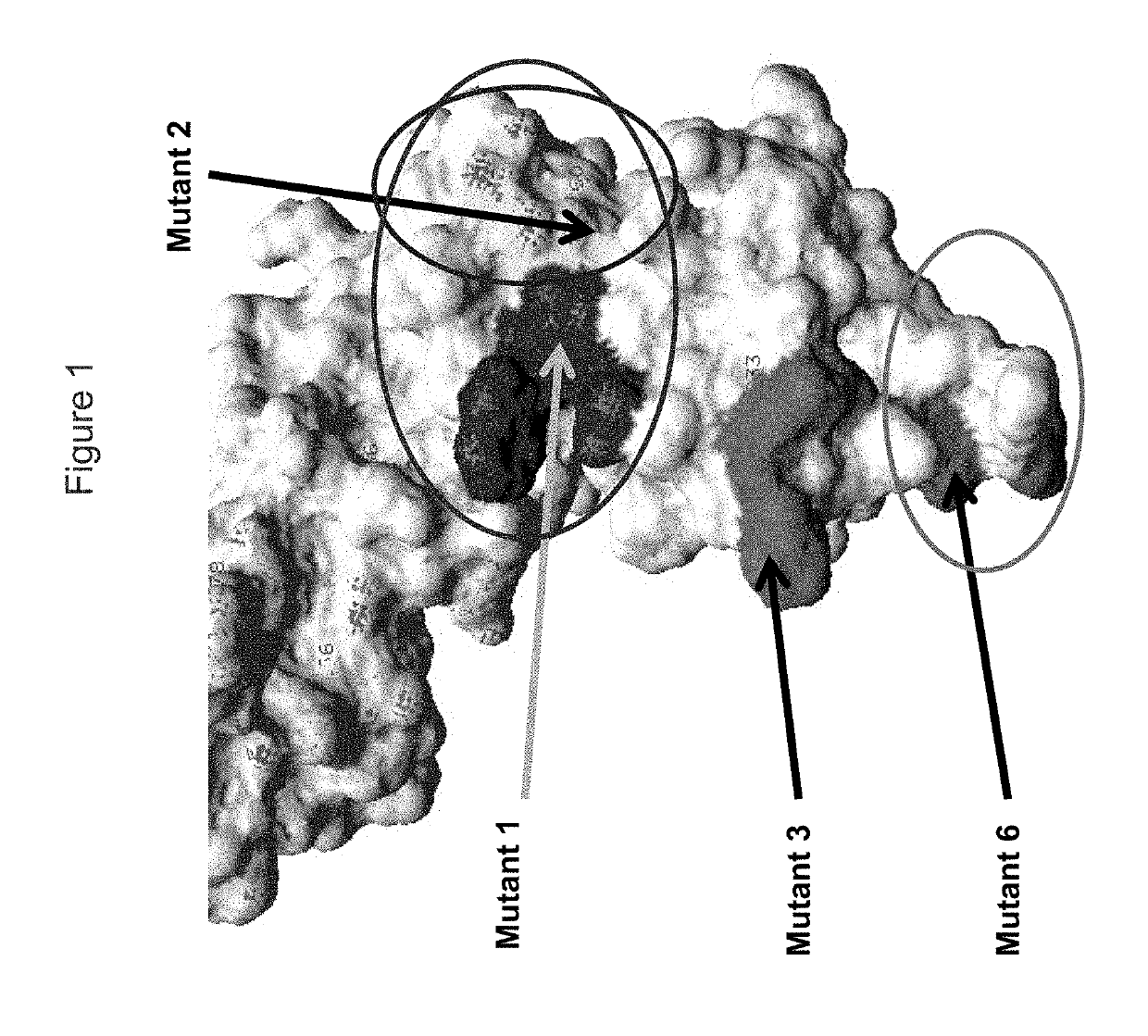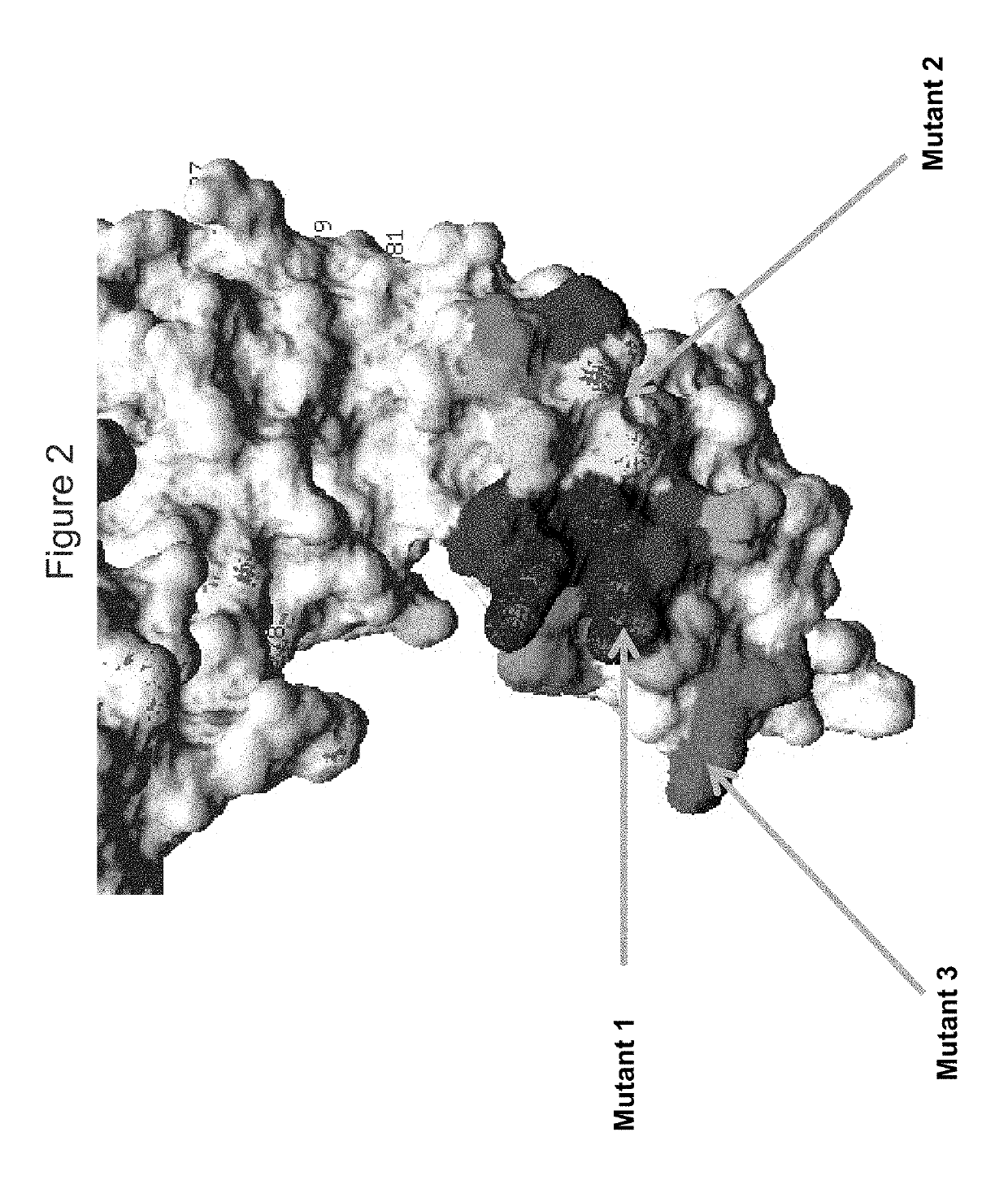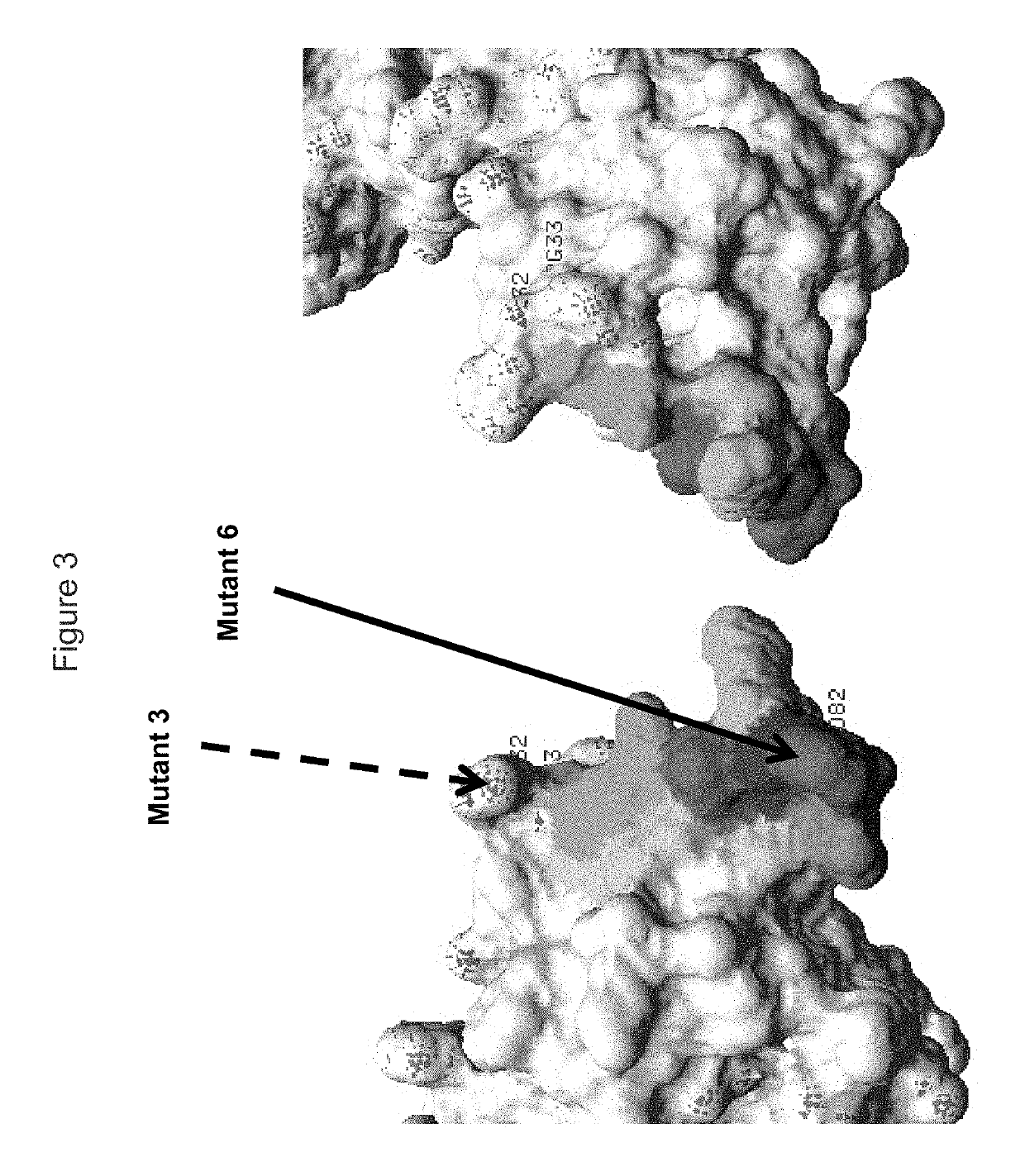KIR3DL2 binding agents
a binding agent and kir3dl technology, applied in the field of kir3dl2 binding agents, can solve the problems of impeded adcc-based approaches and strong internalization of kir3dl2, and achieve the effect of avoiding competition with ligands
- Summary
- Abstract
- Description
- Claims
- Application Information
AI Technical Summary
Benefits of technology
Problems solved by technology
Method used
Image
Examples
example 1
n of Anti-KIR3DL2 Antibodies
Materials and Methods
Primary and Secondary Flow Cytometry Screenings
[0379]Anti-KIR3DL2 mAbs were primarily screened in flow cytometry for binding to KIR3DL2-expressing Sézary cell lines (HUT78 and COU-L) and to KIR3DL2-transfected tumor cell lines (HEK-293T). Flow cytometry devices include: FACSarray (BD Biosciences, primary screen), FACSCanto II No. 1 and No. 2 (BD Biosciences) (secondary screens) and FC500 (Beckman Coulter) (secondary screens). The KIR3DL2+ and other tumor cell lines used included:[0380]HUT-78 (KIR3DL2 positive Sézary cell line) grown in complete IMDM;[0381]HEK-293T (human kidney cancer) / KIR3DL2 and HEK-293T / KIR3DL2 Domain 0-eGFP cell lines (grown in complete DMEM);[0382]COU-L (KIR3DL2 positive Sézary cell line) (grown in complete RPMI complemented with 10% human serum AB);[0383]HEK-293T / KIR3DL1 and HEK-293T / KIR3DL1-eGFP cell lines (grown in complete DMEM);[0384]B221 (B-lymphoblastoid, CD20 positive human cell line) / KIR3DL2 cell line (g...
example 2
s that do not Induce KIR3DL2 Internalization
[0395]Briefly, either no antibody or 20 μg / mL of an anti-KIR3DL2 domain 0 antibody, or antibody 10F6, 2B12, 18C6, 9E10, 10G5, 13H1, 4B5, 5H1, 1E2, 1C3 or 20E9 were incubated with fresh Sézary Syndrome cells from 5 different human donors, for 24 h at 37° C. Cells were then washed, fixed and permeabilized using IntraPrep permeabilization reagent from Beckman Coulter. Presence of KIR3DL2-bound 10F6, 2B12, 18C6, 9E10, 10G5, 13H1, 4B5, 5H1, 1E2, 1C3 or 20E9 Ab is revealed with a goat anti-mouse Ab, labelled with GAM-PE. Table 6 shows an example of an anti-KIR3DL2 domain 0 antibody 13H1, after 24 h incubation, respectively. Table 5 shows a strong decrease in fluorescence for 13H1 in each of the different donors, confirming that the binding of this antibody down-modulates the expression of KIR3DL2 on SS cells. Similar results were obtained for anti-D0 antibody 4B5 as well as a range of anti-D1 antibodies. Conversely, the anti-KIR3DL2 domain 0 or ...
example 3
s that do not Internalize into Sézary Syndrome Cell Line
[0398]Internalization of antibodies 10F6, 2B12, 18C6, 9E10, 10G5, 13H1, 4B5, 5H1, 1E2, 1C3 and 20E9, as well as antibody AZ158 (an anti-domain 0 mAb) and other anti-D1 antibodies were assessed by fluoro-microscopy using the HUT78 SS cell line.
Materials and Methods:
[0399]Hut-78 cells were incubated during 1H at 4° C. with 10 μg / ml of the different antibodies. After this incubation cells were either fixed (t=OH) or incubated for 2H at 37° C. Cells incubated for 2H were then fixed and stained. Antibodies were stained using goat anti-mouse antibodies coupled to Alexa594 (Invitrogen, A11032). LAMP-1 compartments were stained using rabbit anti-LAMP-1 antibodies (Abcam, ab24170) revealed by goat anti-rabbit polyclonal antibodies coupled to FITC (Abcam ab6717). Pictures were acquired using an Apotome device (Zeiss) and analyzed using the Axiovision software.
Results:
[0400]Anti-KIR3DL2 mAbs were visible in red while LAMP-1 compartments w...
PUM
| Property | Measurement | Unit |
|---|---|---|
| concentration | aaaaa | aaaaa |
| pH | aaaaa | aaaaa |
| median time | aaaaa | aaaaa |
Abstract
Description
Claims
Application Information
 Login to View More
Login to View More - R&D
- Intellectual Property
- Life Sciences
- Materials
- Tech Scout
- Unparalleled Data Quality
- Higher Quality Content
- 60% Fewer Hallucinations
Browse by: Latest US Patents, China's latest patents, Technical Efficacy Thesaurus, Application Domain, Technology Topic, Popular Technical Reports.
© 2025 PatSnap. All rights reserved.Legal|Privacy policy|Modern Slavery Act Transparency Statement|Sitemap|About US| Contact US: help@patsnap.com



